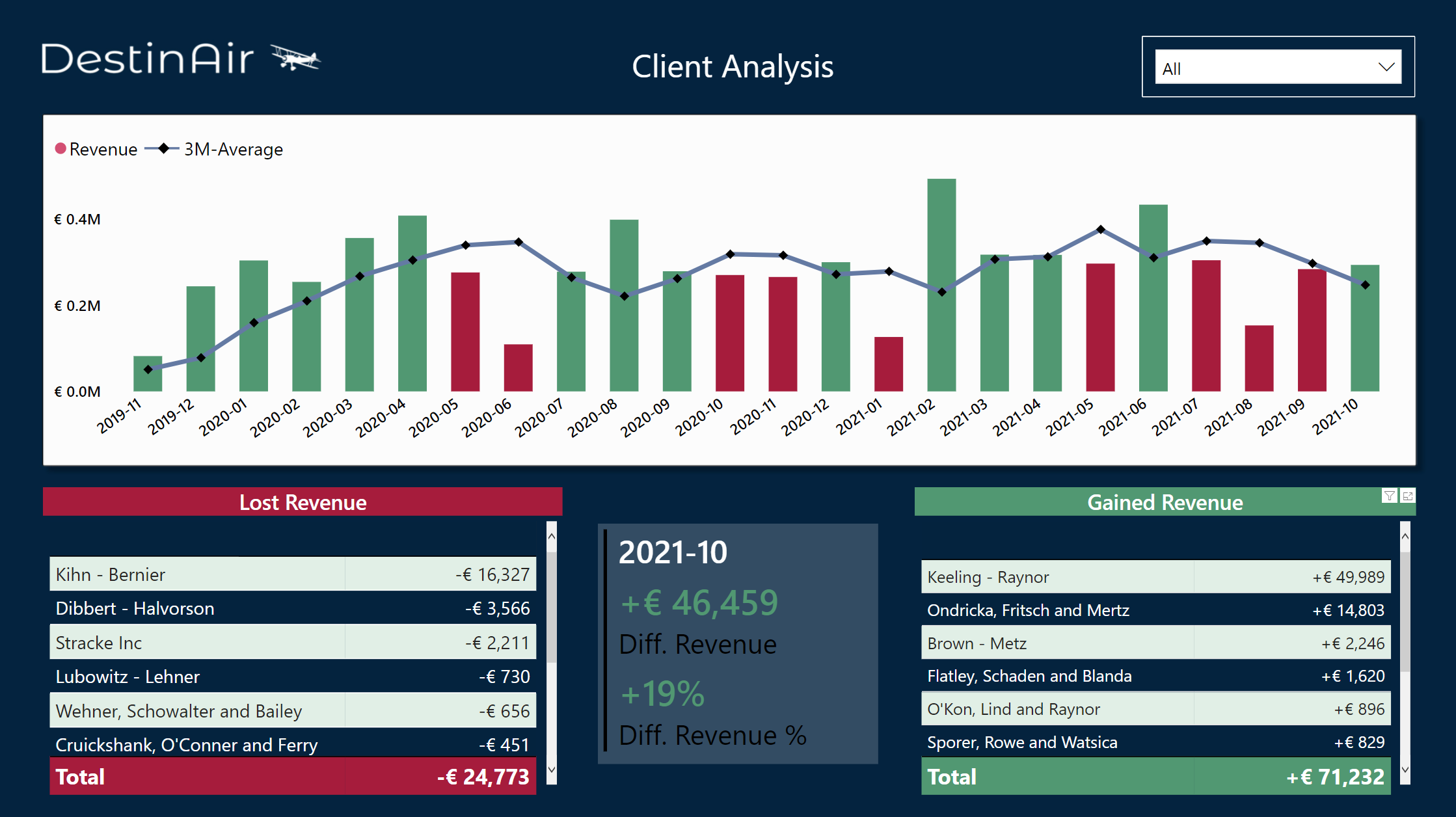
Customers are the beginning and the end.
Whether your business is active in the B2B or B2C space: Only if you know and love your customers will you be entrepreneurially successful. Customers are the beginning and the end, the one and all, the heart of every company.
But how do you, dear entrepreneur, know exactly which ones among your customers should be particularly coddled? For whom do you answer the phone on weekends? Whom do you send a bouquet of flowers and a box of chocolates?
Entrepreneurial life would be so beautiful without customers!
A former entrepreneur
content
And more importantly, how do you know if your love is being reciprocated? Does the chosen one love you as much as you love him or her? And above all: Do they still love you, after all these years? Right, it often is small trifles that shake the foundations of every relationship. You may have forgotten to carry the project garbage out, once or twice. Or your entrepreneurial oral hygiene has diminished a little. Nothing that a good intention and a courageous grip on the metaphorical toothbrush could not iron out.
Could have ironed out!
Could have ironed out if you had noticed!
But you didn't.
So now you sit like a sad dog in the office kitchen, while your ex-customer tinkers from webinar to webinar and probably - no, definitely! - flirts with another company in a private MS Teams meeting. A company with white teeth and a six-pack, probably!
Enough analogies. As fun as the comparison between love life and customer relationship is, the topic is too important for any entrepreneur to ridicule it.
So, in all seriousness, in this post you will learn about the different types of customer analytics. You'll learn step by step how to perform a customer analysis, what to look out for and what can go wrong. And last but not least, you will understand why you, dear entrepreneur, also need a customer analysis.
Not yet subscribed?
Have you already subscribed to our monthly newsletter, Dashboard of the Month? Month after month, we present a dashboard and share insight on how our customers design smart KPIs, how they set their goals, and how they make sure they reach them by tracking progress in a Power BI dashboard. Not to miss!
And of course we also have a live dashboard. It was created from a current customer project of Power Partners and will inspire you for your own customer analysis.
But wait, there's more! As a matter of fact, there are many different types of customer analytics! So we developed a tool choser. It will help you select the right type of customer analysis in just one minute.
Direct links for the impatient reader:
Customer Analysis: Why?
There are a variety of reasons why companies engage into customer analytics. For example:
- Existing customer care: Which customers buy a lot from you and have therefore earned a special service?
- Early warning signals: How do you notice as early as possible when a customer (or customer segment) is not satisfied with the service, or is about to change providers?
- Target group analysis: Based on your existing customers: Which customer segment should you focus in marketing, in order to acquire new customers?
We will talk about the following topics in this article:
- Identification: How do you know which existing customers are important for your company?
- Segmentation: How do you split customers into different groups, or segments?
- KPIs: Which KPIs exist, and when should you use them?
Customer Segments
In our consulting, we have encountered a variety of criteria that are used to identify our favorite customers. The most important of these are:
- Values / value system and other qualitative criteria
- Customer attributes
- Sales and revenue development
- Profit
While value systems are a qualitative by nature, the others are classical quantitative criteria. Which is better? It depends!
Customer Values
Companies with few customers, such as many service providers and B2B companies, know each customer personally. It is possible to take a notebook and a pen, and just write down a list of faviourite customers. Also, you could come up with a few criteria and set up a like / disklike list. "Max is so funny, though I do like Kevin's charm, and James is financially independent. I think I fancy all of them!" More information about customer love and values can be found, for exlample in Mike Michalowicz book "The Pumpkin Plan", or in any one of the many good books on the subject of Customer Centricity.
For many larger companies with a large customer base, as well as for many online companies in the B2C sector, there is no deep and personal customer relationship to classify customers qualitatively. If that is the case for you, you will be dependent on dividing your customers according to quantitative criteria.
Net Promoter Score (NPS)
The Net Promoter Score, or NPS, is a method that allows matching customer values with those of our own company. You've probably taken part in an NPS survey before. Or do you not remember the following question?
"How likely is it that you will recommend company/brand X to a friend or colleague?"
Already seen, right? Only if you answered this question with 9 or 10, you are now classified as a promoter of the company. If you have answered with 7 or 8, then you are labelled as an indifferent. And if you answered with 6 or less, then you are seen as a distractor.
The NPS formula is:
NPS = Promoters (% of all respondents) − Detractors (% of all respondents)

The main focus of NPS is to improve the service of your company. Nevertheless, the division of your customers into detractors, indifferents (sometimes called passives) and promoters is a form of customer segmentation: We entrepreneurs love our promoters, because our promoters love us!
Should we therefore ignore the detractors? Of course not. On the contrary. We should find out by all means why they do not recommend us.
At Power Partners, we are not the biggest fans of NPS. To name just one reason: In our eyes, the scale from 0 to 10 is far too granular. Or can you explain to me what the difference is between 4 and 5?
However, we have mentioned NPS just as an example of how marketing KPIs can often be repurposed for the sake of a customer analysis. This is particularly interesting in combination with customer segmentation, as illustrated by the following questions (see also section on customer and market segments):
- In which customer segments do we find the highest density of promoters?
- Which attribute/dimension allows us to predict whether a lead or prospect will become a good customer?
Customer and Market Segments
We can also tag our customers with attributes and then group customers with the same attributes into the same segment.
Market segments in the B2C sector
In the B2C sector, the classic dimensions for customer segmentation are:
- Geography: Where does the customer live?
- Demographics: How old is the customer?
- Psychography: What lifestyle does a person have, what political inclination, what personality?
- Behavioral Psychology: Where does the customer shop? Is it a bargain hunter or a shopping list admirer?
Market segments in the B2B sector
In the B2B sector, we typically use more dimensions. One reason for this is that data is more readily available, as companies have fewer data protection restrictions than individuals. Another is that in B2B we tend to have a lower number of customers than in B2C, so the extra effort for a more detailed classification is worth the trouble.
Some ideas of additional dimensions are:
- Size: How many employees does the company have? How high is its turnover?
- Geography: Where is the headquarters or the legal domicile? Where is the company's target market?
- Industry: In which industry and in which sector is the company active?
- Profitability: Is the company profitable?
- Growth phase: Is it a start-up, an established company, or even the market leader?
- Ownership: Is it a family business? Or is the company entrepreneur-led? Are there external investors or even a participation by a venture capital fund?
At Power Partners, for example, we focus on growing entrepreneur-led companies in Western Europe with 50 - 250 employees.
Customer attributes have their importance especially in strategy and marketing. For an analysis of existing customers, e.g. to streamline the customer portfolio, they are a bit artificial: "Dear Mr. Musk, Tesla has always been a great customer for Power Partners. Their projects have always been exciting and innovative. Your payments were always on time. But unfortunately you have more than 250 employees. Also, your HQ are in the United States. For all these reasons, we had to decide to terminate the relationship with you. We wish you all the best on your future business path. Kind regards, Christoph Glur".
Absurd? Indeed.
Customer attributes are therefore particularly important for in-depth customer analysis using statistical methods. Such an analysis could, for example, answer the following questions:
- Have (B2B) customers from certain industries generated a lot of revenue?
- What is the customer return rate of family businesses?
- Do profitable or loss-making companies spend more money with us?
- What is the favorite product of city dwellers? (B2C)
But again: If a single customer is the focus of our customer analysis (existing customer analysis and early warning signals), then customer segments are of limited usefulness. For a target group analysis, however, market segmentation can be very powerful. In this case, customer analysis is also called target group segmentation.
Persona
Persona is also a term coined by online marketing in the B2C sector, but now used in all types of businesses on to different purposes. You can see a persona as the narrative to a customer or market segment. A persona has a profile, a name, character traits, and possibly quantitative customer attributes that characterize the archetypal customer for a particular segment.

Once you have defined a few personas, you can assign the existing customers to the personas.
But here, too, just as with market segments, personas are especially helpful in marketing, i.e. ex-ante or personalized campaigns. For a classification of existing customers, personas are only of limited help. The goal of a persona is precisely to make an abstract customer segment emotionally tangible. But if you already have a customer, it is often unnatural, unhelpful and unnecessary to press this flesh-and-blood person into the profile of an archetype.
Nevertheless, there are certainly cases in which a division of existing customers into personas can be helpful. For example, if you set up a campaign for existing customers, it can make sense to mentally put yourself in the persona. For example, the Leo Barths (CEOs) among your customers will get a pocket knife as a small Christmas gift, while the Luna Lotus' (HR) will receive a voucher for spa admission.
Hard Facts: How to Measure Love!
Revenue per Customer: ABC Analysis
Classically, the importance of a customer is measured by sales numbers. The logic we apply here is simple: the more a customer likes us, the more he buys from us.
Additionally to being a very direct, straight forward measure, sales have another important advantage: Each accounting system, every ERP, contains the sales figures, broken down by customer and date. In a few minutes you can pull this information.
A very common customer analysis based on sales is the so-called ABC Analysis. The basic idea underlying this type of analysis is that customer sales are usually pareto-efficient, i.e. a few large customers generate almost the entire turnover.
According to Pareto efficiency, the following rule of thumb applies to most companies:
- The largest 20% of our customers generate 80% of sales: we call these the A-customers
- The next 20% of our customers generate 10% of sales: these are the B customers
- The smallest 60% of our customers generate 10% of sales: these are the C customers
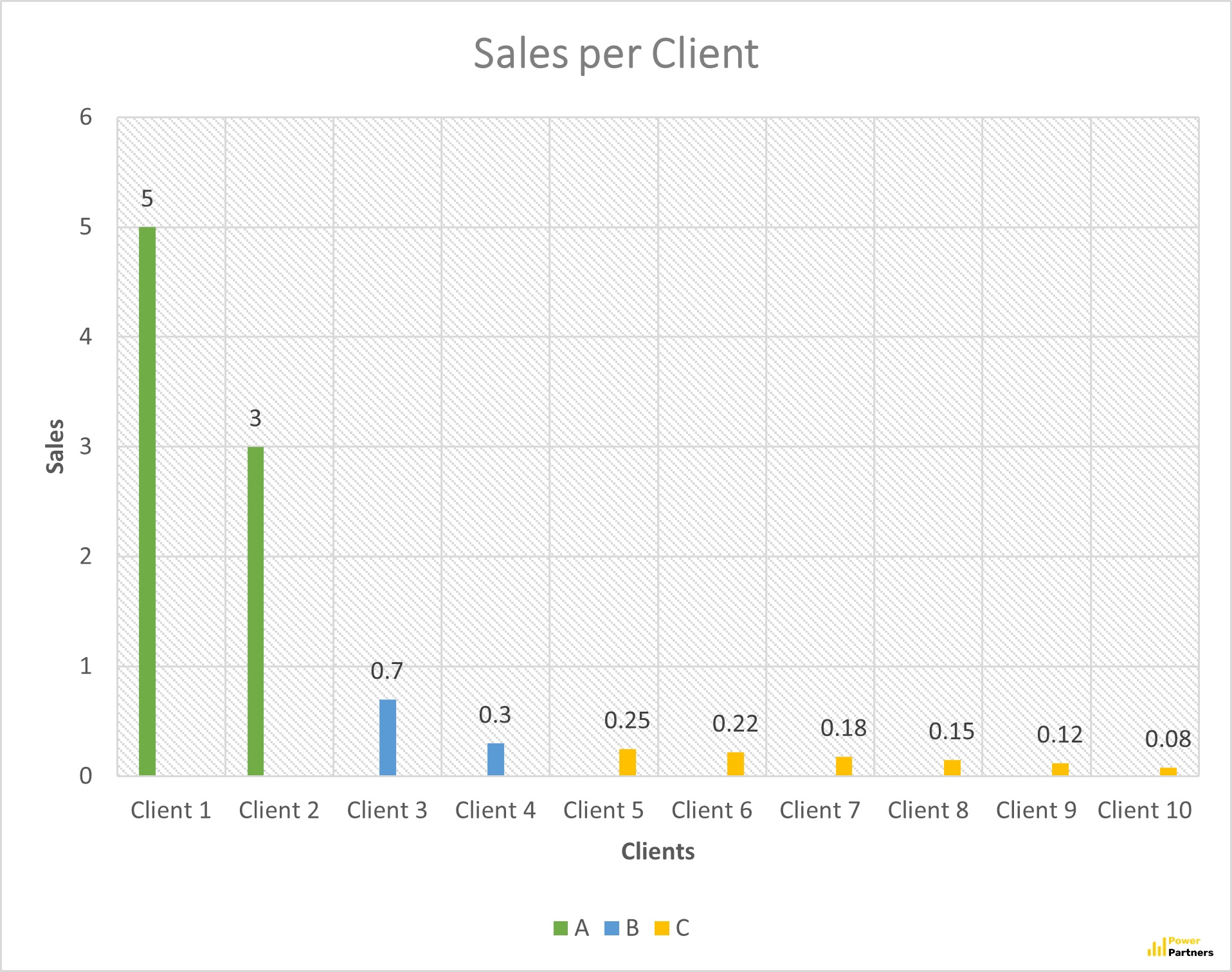
This approach makes it possible to unambiguously classsify customers into one of three categories. The A-customers can then be coddled, whereas the C-customers only get a C-service. Some companies even actively terminate the customer relationship of C customers. If you want to be so radical, then at least understand the possible negative consequences (bad rating on Google My Business, etc.).
What are the problems of a sales ABC customer analysis? Let me illustrate this with a quote:
More isn't better. Better is better.
A wise entrepreneur
Let's say you have a consulting firm with ten clients. Would you really renounce to 6 of them, further increasing your concentration risk?
You would not.
Customer Profitability Analysis
Sales cannot be the single criterion by which we analyze our customers. It often happens that the large customers knows about their importance. Accordingly, they have and lever a strong negotiating position. Such a key customer can beat down our price, often to the point where this customer no longer makes any profit. A dysfunctional relationship, so to speak.
Why don't we classify our customers according to profit, then?
Good idea!
Only: For many companies, it is very difficult to measure the profit per customer, per project, per order or per contract.
As a matter of fact, many of Power Partners' BI projects focus exactly on this: being able to calculate the profitability of clients. Usually, this requires a lot of preparatory work in terms of controlling, time tracking, inventory and warehouse management, and more. In short, while allocating revenues to a customer is easy, this is usually harder for costs. Only when all relevant data has been recorded can it be used for a drill down analysis.
Perhaps you can remember Transport De Rese's profitability analysis? This is exactly such an example from the transport industry.
This type of analysis is also often called post-calculation, especially in the project business.
And then one last remark: we could name more than one project in which it turned out that profit also does not proxy a company's customer-love fully either. Sometimes the entrepreneur wriggles in order to uplift their "favorite customer" to position one, e.g. by tweaking the model. Notice anything? Correct! Go back to the "Customer Values" section!
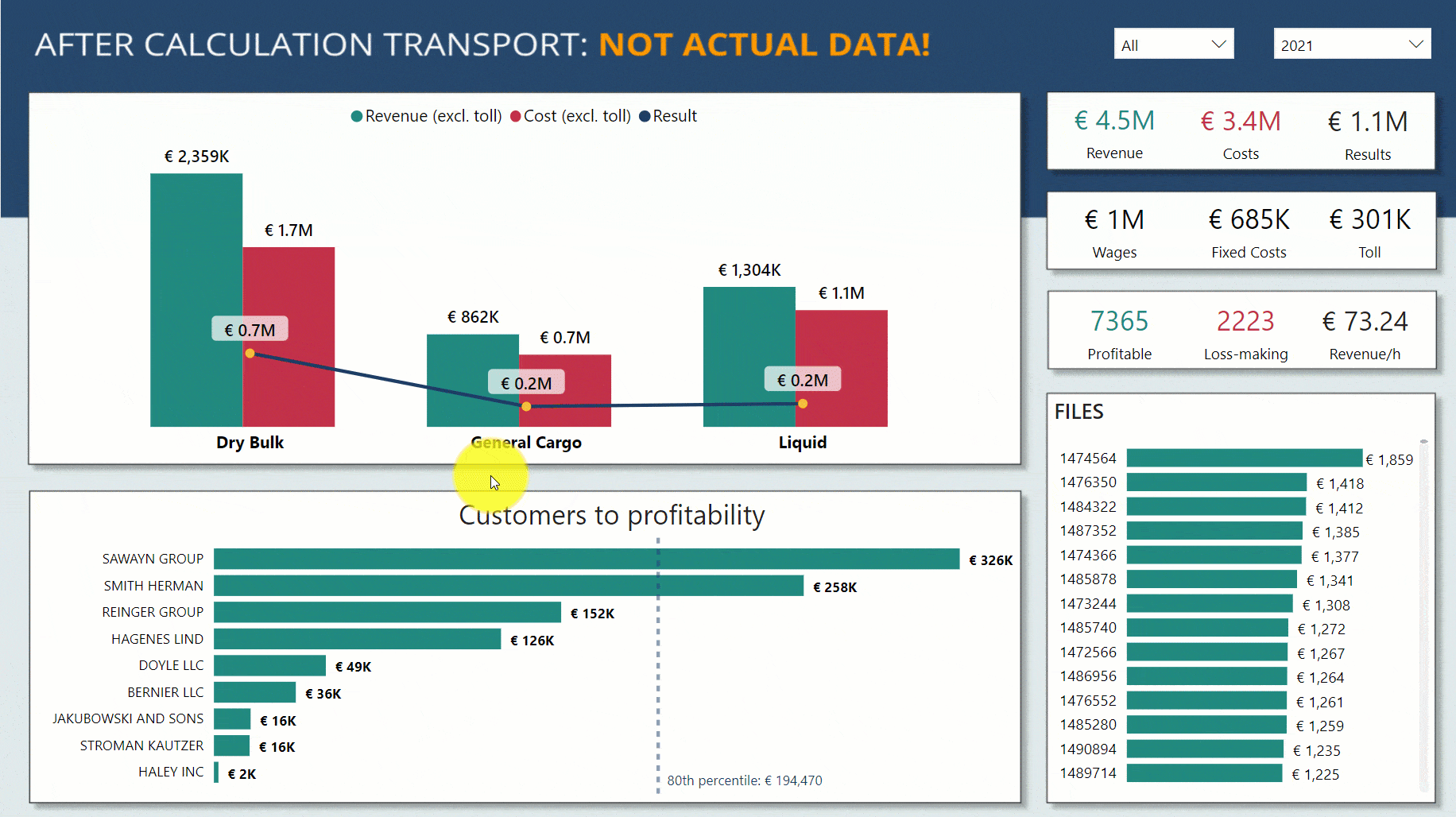
Tool Choser
With this tool, you can assess in a minute which type of customer analysis is right for you:
Example Dashboard: Customer Delta Analysis
The following dashboard is the result of a customer project, one which we will present in detail at a future post. The dashboard was branded for this article on our fictitious company DestinAir. The numbers and the names of the customers are not real and fictitious.
It is a customer delta sales analysis. This type of analysis serves as a leading indicator of worsening customer relationships. We measure the relative evolution of sales by customer.
The entry point of the dashboard is overall sales. The historical development of the revenue, as well as the three-month moving average (periods t-1, t-2, t-3) are shown. In the following screenshot, for example, we see that we sold 34% more in April 2020 than the average in the months of January, February and March:
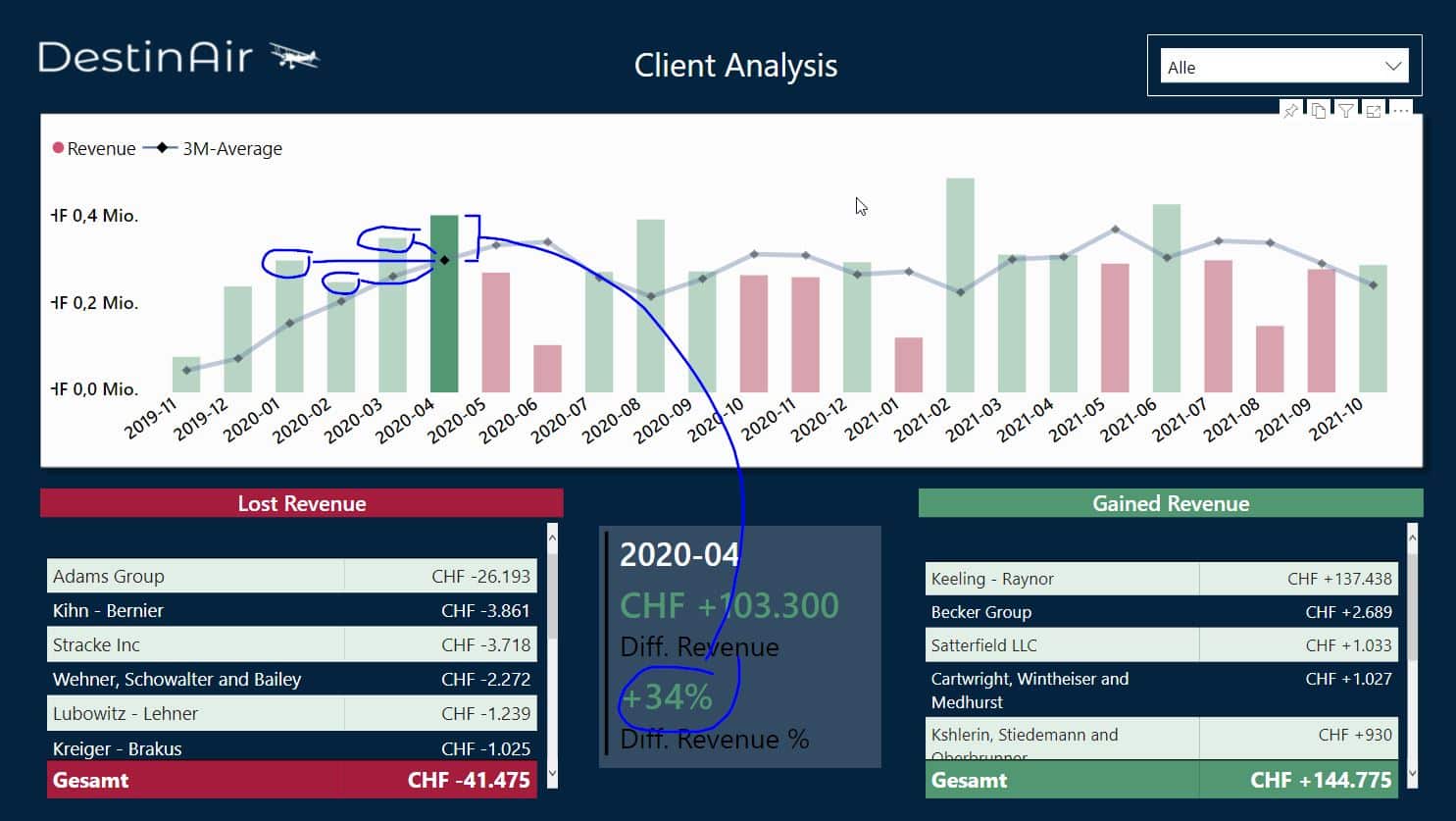
In the same report, however, we can also see that this was luck more than anything else. The increase came entirely from a single client, Keeling - Raynor. In April, they spent 137,438 sFr. more than on average in Q1:
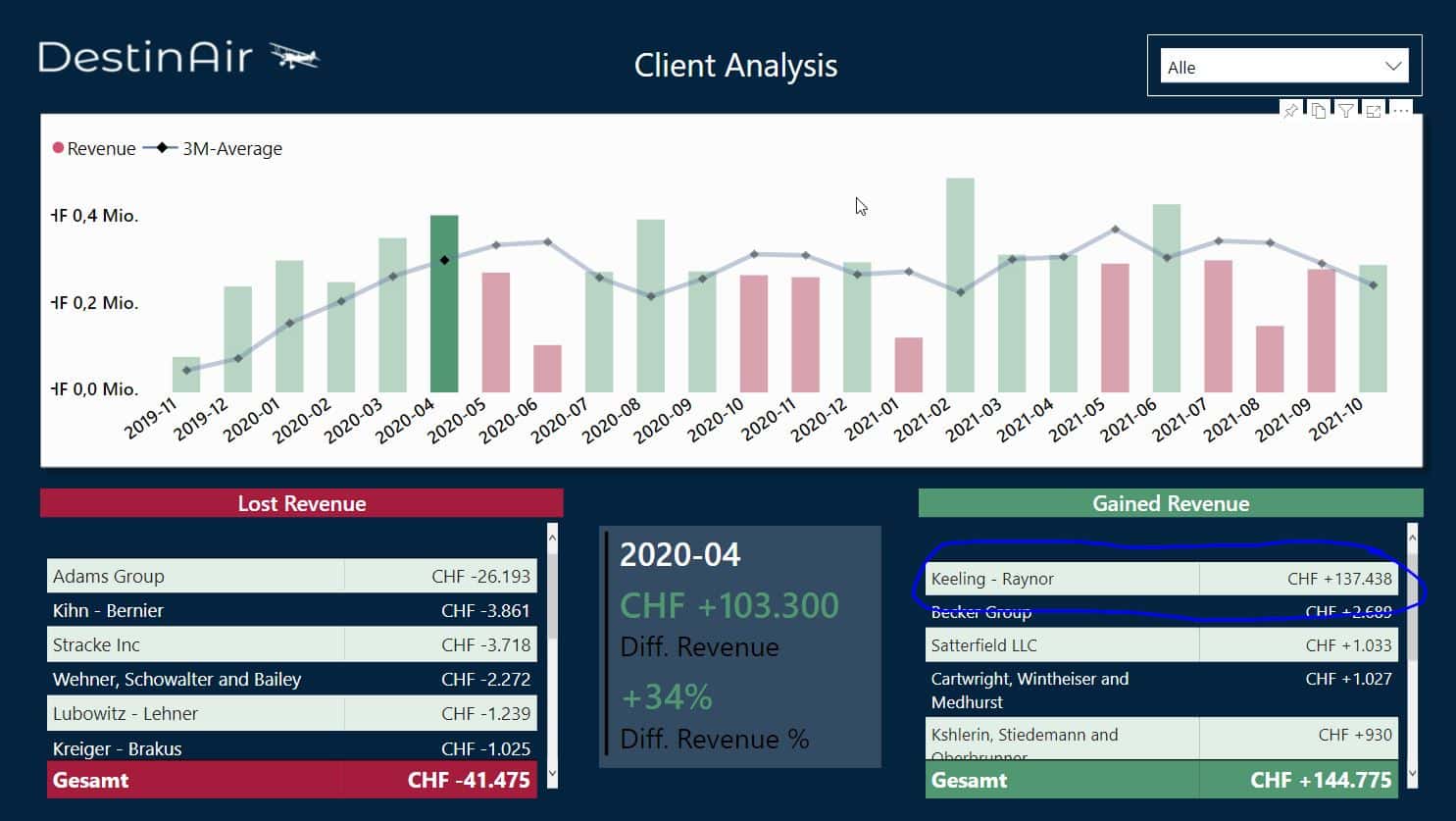
Who is this Keeling - Raynor? A new favorite customer, or a nine day wonder? To find out, we click on the customer to filter the report to this one customer:
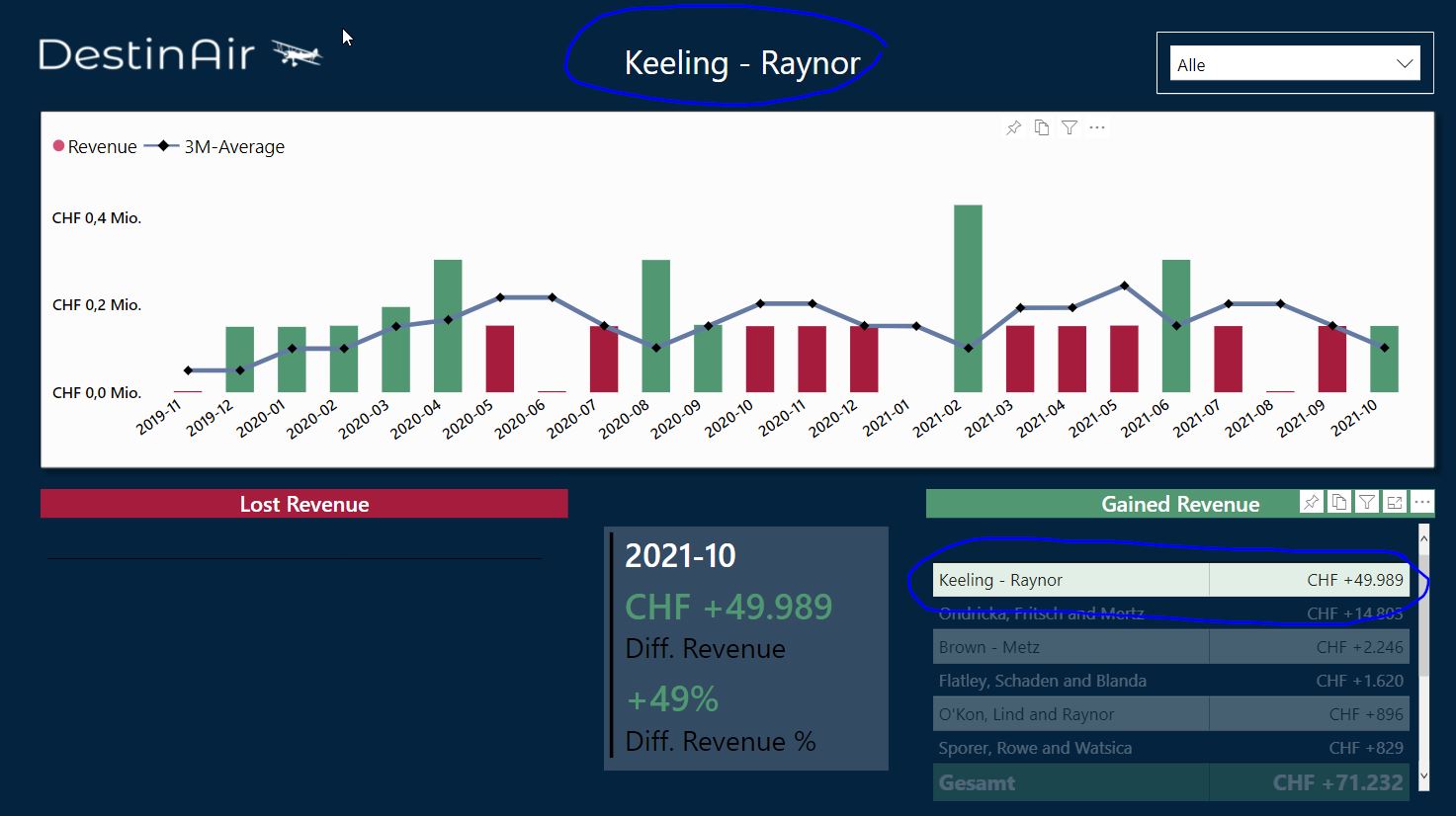
Alright, Keeling - Raynor has stable, high sales over the years. Leo Barth, the CEO of DestinAir, should invite the manager of Keeling - Raynor to lunch soon.
So, and now you: Time to play with the dashboard:
Conclusion
Never want to lose a customer again? Would you like to focus on the most important customers? Do you want to target the right customers in your campaigns?
Now you know how: with a customer analysis.
Share your thoughts! And feel free to contact us via [email protected],or post your comments below.



